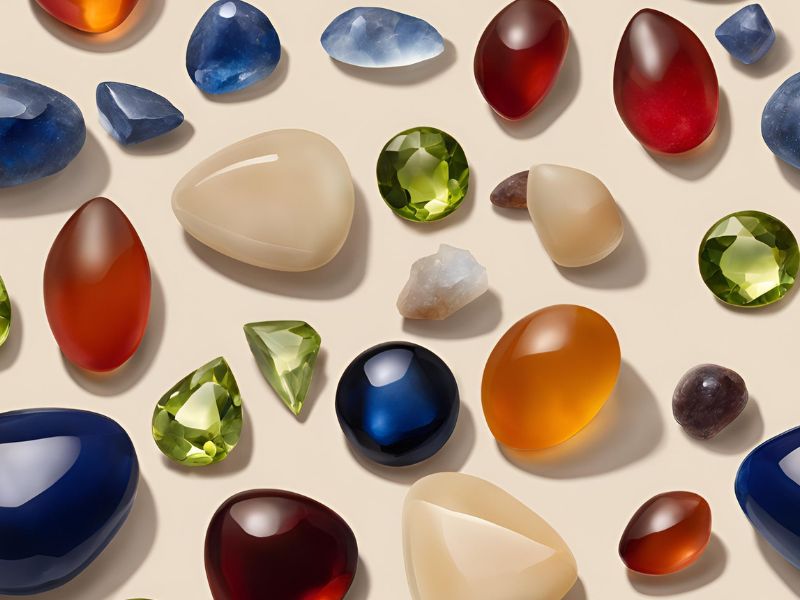
August’s Gemstones: From Carnelian to Spinel
Share
In 1912, the American Jewelers Association (now Jewelers of America) officially assigned gemstones to each month during a conference in Kansas. For August, they selected peridot and sardonyx. Later, in 2016, spinel was added to the list by the American Gem Trade Association (AGTA) and Jewelers of America.
Before this standardized list, different cultures associated various stones with August. For centuries, carnelian was considered the birthstone in Jewish, Roman, Spanish, and Italian traditions, while sardonyx held this role in Polish and Arab cultures. Interestingly, in Russia, August was linked to alexandrite. Peridot, now an August stone, was historically associated with September in some traditions. Even early biblical translations of Aaron’s breastplate—one of the inspirations for modern birthstone assignments—placed a diamond in the position corresponding to August.
Carnelian: The Stone of Passion and Protection
Carnelian has been treasured since antiquity, often ranking just below emeralds and diamonds in value. It appears in sacred texts such as the Egyptian Book of the Dead, the Indian Ayurveda, and the Bible. Ancient civilizations—including the Greeks, Chinese, and Mongols—highly prized carnelian, and according to Eastern legend, even the Prophet Muhammad wore a carnelian ring.
Throughout history, carnelian was considered a powerful protective talisman, believed to shield against magic, curses, and illnesses. Many cultures thought it absorbed the sun’s energy and brought prosperity and good fortune to its wearer. Often referred to as the “stone of love,” carnelian was believed to ignite passion and desire, especially for women.
Sardonyx: A Stone of Strength and Devotion
Sardonyx, another ancient and revered gemstone, was long regarded as a mighty talisman. It was thought to instill courage, protect against deceit and betrayal, and ward off illness and enemies. Legends claimed that sardonyx rejuvenated its owner, promoted longevity, and enhanced bravery, honor, and self-discipline.
Sardonyx was also considered a guardian stone for travelers and a symbol of love, faith, and dedication. In Europe, it became a symbol of strength, vitality, and marital happiness. Mystics valued it for enhancing astral travel and clairvoyance.
Though both carnelian and sardonyx are relatively affordable ornamental stones, the American Jewelers Association likely introduced peridot—a transparent gemstone of higher market value—to elevate August’s birthstone selection. However, the reasoning behind shifting peridot from September to August was never officially explained.
Peridot: A Gemstone of Life and Renewal
In ancient Egypt, peridot was considered sacred, symbolizing fertility and life force. Egyptians wore peridot amulets for prosperity and protection, and the gemstone adorned many luxurious artifacts and jewelry pieces.
The Greeks and Romans also cherished peridot. The Greeks linked it to Persephone, the goddess of nature and growth, while the Romans believed it brought happiness and peace of mind.
During the Middle Ages, peridot gained popularity among European knights and nobility. Its vibrant green hue symbolized hope, renewal, and personal growth. It was frequently set in rings, necklaces, and other fine jewelry, adding sophistication and elegance.
As with any birthstone, choosing the right one is a personal journey. Studying its history and properties while trusting your intuition can help guide your decision.

Olga Bachurina,
Co-Founder of Venus in Libra,
Certified by GIA & Gübelin Academy



